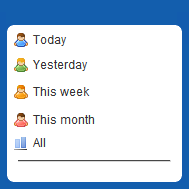A Mobile Phone Application for Someone Fitness Monitoring with Fast Fourier Transform Algorithm
DOI:
https://doi.org/10.21107/kursor.v10i3.195Keywords:
Arduino Uno, AD8232, Pulse Sensor, Fitness, Heart RateAbstract
The development of science and technology besides facilitating human life in various daily activities. These conditions will cause the body to not fit and the emergence of various health problems. Heart rate is one of the parameters that are useful for providing medical information. Heart rate measurement is very important in the medical world and is one of the standards for knowing one's fitness level. ECG is a medical test to detect abnormalities by measuring the electrical activity produced by the heart. ECG recordings are used to determine the condition of a person's fitness level. Heart rate monitoring can be done using Arduino Uno, AD8232, and Pulse Sensor. The results of heartbeat delivery can be seen through the Android application that was created. A person's fitness level data is sent via DataBase which is then forwarded to the Android application. The value range of a person's fitness level is 49-85 BPM for the male category, while for women with a range of values from 54 to 89 BPM. The error value of detection of a person's fitness level with Sensor Pulse and manual is 2.043%, the sensitivity value is 97.63%, the specificity value is 5.82%, and the accuracy value is 50.35%. In addition, ECG waves are also sent to Matlab for extraction using the FFT algorithm.
Downloads
References
[2] Suharjana, “Aktivitas Fisik Bagi Kebugaran dan Kesehatan,†p. 26, 2014.
[3] L. A. Hidayat and A. Yudhana, “Rancang Bangun Pendeteksi Psikologis Seseorang Berdasarkan Detak Jantung Berbasis Komputer,†no. 1, pp. 43–48, 2018.
[4] T. Warsahemas, W. S. Nahar, and N. R. Pribadi, “Pengukuran Detak Jantung Menggunakan Kamera Smartphone,†no. December, 2016.
[5] P. Kalaivani, T. Thamaraiselvi, P. Sindhuja, and G. Vegha, “Real Time ECG and Saline Level Monitoring System Using Arduino UNO Processor,†Asian J. Appl. Sci. Technol., vol. 1, no. 2, pp. 160–164, 2017.
[6] D. N. K. Hardani, “Ekstraksi Fitur Sinyal Elektrokardiogram Berbasis Independent Component Analysis,†vol. 16, no. 1, pp. 10–15, 2015.
[7] A. Yudhana and M. D. D. Putra, “Rancang Bangun Sistem Pemantauan Infus Berbasis Android,†no. April, pp. 91–95, 2018.
[8] H. Andrian, B. Irawan, and A. B. Osmond, “Aplikasi Penghitung Denyut Jantung Berbasis Android,†vol. 2, no. 2, pp. 3486–3493, 2015.
[9] R. Y. Sipasulta, A. S. M. Lumenta, and S. R. U. A. Sompie, “Simulasi Sistem Pengacak Sinyal Dengan Metode FFT (Fast Fourier Transform),†E-journal Tek. Elektro dan Komput., pp. 1–9, 2014.
[10] B. Haryadi, “Ekstraksi Ciri Pola Bunyi Jantung Menggunakan FFT,†pp. 12–23, 2015.
[11] G. W. Wohingati and A. Subari, “Alat Pengukur Detak Jantung Menggunakan Pulsesensor Berbasis Arduino Uno R3 Yang Diintegrasikan Dengan Bluetooth,†vol. 17, no. 2, pp. 65–71, 2013.
[12] M. Chhabra and M. Kalsi, “Real Time ECG Monitoring System Based on Internet of Things (IoT),†Int. J. Sci. Res. Publ., vol. 7, no. 8, pp. 547–550, 2017.









